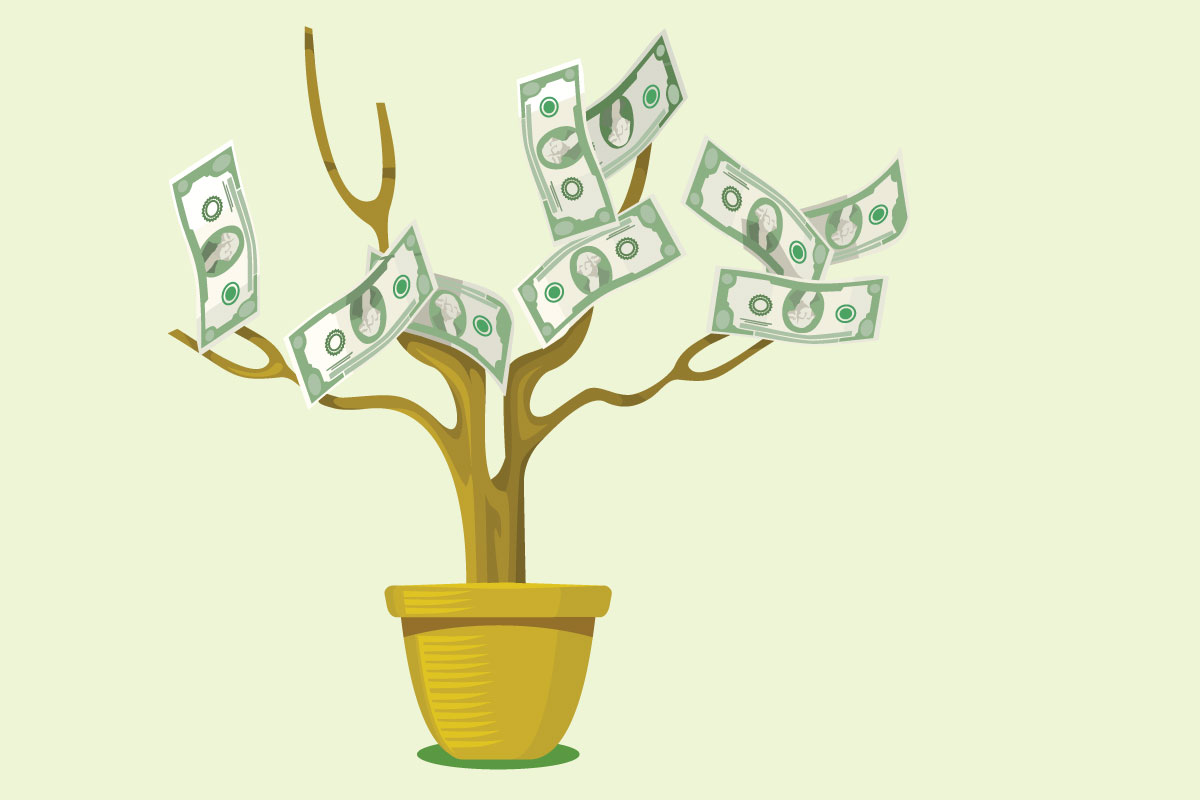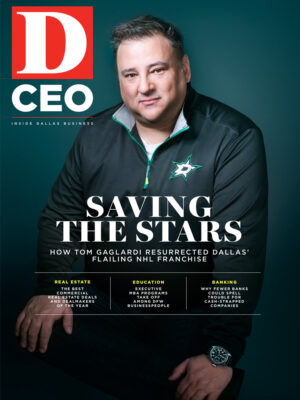In the aftermath of the Great Depression, the tightly regulated banking industry of the 1950s, ’60s, and ’70s operated by what wags of the time called the “3-6-3” rule, wherein bankers paid 3 percent interest on depositors’ accounts, lent out that money at 6 percent interest, and were on the golf course by 3 p.m.
In 2016, things are much different. Consider the following data from SNL Financial LC and SAMCO Capital Markets Inc.: The last time a Texas institution received a charter—a green light from the government to operate as a bank—was in June 2009, when Round Rock’s R Bank got off the ground. The last Dallas-Fort Worth bank to get a charter was Addison’s Liberty Capital Bank, in September 2008. Since 2011, only five institutions have received charters nationwide. And of those, only two were true “de novo,” or new, banks, according to Jacob Thompson, SAMCO’s Dallas-based managing director of investment banking. The other three were generally formed by investors to make it easier for them to acquire failing banks. Between 1998 and 2008, in contrast, more than 2,000 banks had formed—an average of more than 100 per year.
“In the last decade, regulators would hand a charter to anyone who could fog a mirror,” Thompson says. “Now, you need $20 million to $25 million in start-up capital and a quality management team that can build and run a successful bank. The barriers to entry are so high that you need a qualified team to even be considered.”
For their part, however, regulators point to a 2014 study from two Federal Reserve Board researchers that suggests the fault lies more with economic factors. Even without regulatory changes following the financial crisis, the Fed researchers wrote, the weak economy and low interest rate environment likely caused 75 to 80 percent of the decline in new charters between 2009 and 2011. At the same time, they noted, it appears the United States has seen a “structural shift to lower levels of bank formation post-crisis.” But, no one yet knows if this change is permanent, or whether regulations are causing it.
Small and midsized banks hold 55 percent of small business loans and 75 percent of agricultural loans, according to the Federal Reserve Bank of Dallas. In North Texas, the ongoing consolidation of the market into fewer hands combined with the lack of new entrants raises the possibility of a credit crunch for small businesses in these parts down the road. “I don’t see it occurring right now,” says Joe Goyne, president and chairman of Dallas-based Pegasus Bank. “But it could happen.”
Decades-long Trend
The number of community banks has been shrinking for decades, while the biggest players have gained ever-larger amounts of market share. Between 1984 and 2011, the number of federally insured banks in this country fell by 59 percent, according to a 2012 FDIC study. Almost every bank that went away in that time frame had assets of up to $100 million—with 96 percent having assets of $25 million or less. Meanwhile, the biggest banks—those with $10 billion-plus in assets—saw their share of industry assets climb from 27 percent to 80 percent over that same period. That happened largely because of a merger-and-acquisition wave that followed the easing of state laws.
In Texas alone, M&A activity combined with 54 bank failures to produce a 26 percent drop in the number of insured institutions between 1990 and 1996. In the 1980s, Texas had more banks than any other state. The M&A frenzy arguably peaked in the late ’90s, following the 1994 enactment of a federal law that removed many restrictions on banks doing M&A deals and otherwise operating across state lines. Between 1995 and 1998, nearly 6 percent of banks merged or otherwise consolidated annually, according to the FDIC. Between ’04 and ’07, by contrast, that yearly average percentage fell to 3.7 percent.
The end result, however, has been for a relatively small number of players to assume a disproportionate chunk of the market. “The top 10 banks in the industry control 80 percent of the assets,” says Scott MacDonald, president and CEO of the Southwestern Graduate School of Banking Foundation at Southern Methodist University. “The concentration of assets in large institutions is almost scary.”
Over time, community banks—traditionally defined as those with $1 billion or less in assets—have become significantly less profitable than midsized and large banks. Between 1993 and 2006, FDIC data showed non-community banks having pre-tax return on assets that averaged 35 basis points more than the small fries.
Of course, low post-Great Recession interest rates are particularly rough on small banks’ profits. That’s because community banks collectively get 80 percent of their revenue the old-fashioned way: taking the difference between the interest they pay on deposits and the interest they charge on loans. For big banks, that figure is closer to 67 percent, as many are now active in non-banking work like securities trading and investment banking. Larger players have also outperformed smaller colleagues by shifting more operations to high-growth areas. Between 1985 and 2011, DFW’s population ballooned 81 percent—the ninth-fastest rate in the country.
But another big factor in small banks’ profit struggles—albeit a hard one to measure with certainty—is the burden of increasing regulation. Between 2001 and 2010, 10 major pieces of banking legislation became law, giving institutions 1,858 pages to adhere to (including 849 from Dodd-Frank).
Small Business Credit at Risk?
A continued dwindling in the number of community banks could eventually make it harder and more expensive for small businesses to find the customized financing that only small banks will provide, according to MacDonald of SMU. Where money center banks generally offer cookie-cutter loan products to small corporate borrowers, community banks can be more flexible on the terms of their credit, from how much they’ll charge for the debt to the collateral they will accept, he says. “Community banks must get smarter, use technology more, and focus their efforts,” MacDonald says. “And they must get bigger in urban areas.”
Not everyone in banking believes small business credit is in danger. “If you have $3 million to $5 million in sales, there is more competition in that sector than anywhere else,” says Norm Bagwell, CEO of Bank of Texas, a unit of BOK Financial Corp. with more than $5.4 billion in assets. “The tough part is that consumers and small businesses do not always understand what qualifies for credit, and this is the disconnect.”
Although Bank of Texas produced record earnings in 2015, Bagwell adds, the climate that new players face could make entrepreneurs think twice about launching new banks. “The historical risk and reward tradeoffs for startups are just not present,” he says. “They have to ask if the trip is worth taking.”
Despite obstacles, some small North Texas banks are proving they can still grow. Over at Pegasus Bank, Goyne and his team grew the institution’s asset base 17 percent last year, to $400 million, with net income after taxes growing 25 percent. The bank was started in February 2007 with $17 million in capital.
“Our growth is totally dependent on referrals,” Goyne says. “We feel if we continue to provide good products and service, our customers are very eager to refer colleagues and friends to us.”





